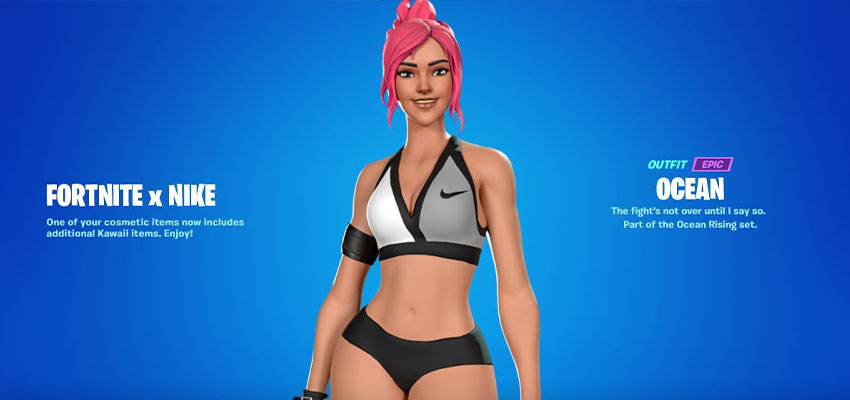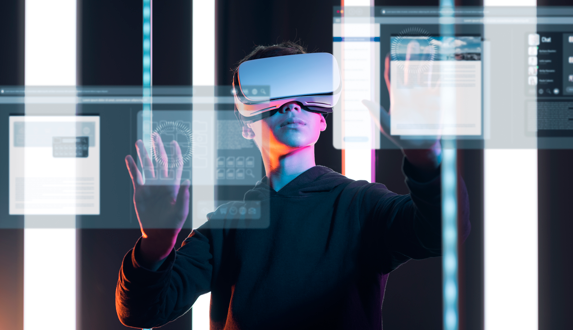Marketing in the Metaverse: It’s time for marketers to become familiar with the marketing of the future. The metaverse will be the Internet of the future, opening up new ways of marketing and communication and creating immersive and emotionally impactful experiences for customers through the use of augmented and virtual reality.
Will the metaverse be the Internet of the future?
The metaverse is set to become the new paradigm of social networks and human-machine interaction, and it is already transforming the use of digital devices.
One of the most important and widely cited contributions to the metaverse discussion comes from respected analyst Matthew Ball, investor and managing partner of the venture capital firm EpyllionCo. Ball believes that the metaverse will be as transformative and influential as the Internet was in the 1990s. It will be hard to avoid: companies will sell products, media will communicate using new languages, and, above all, social media will be in 3D. According to Ball, the metaverse will not be just a “virtual world,” a “virtual space,” or simply “virtual reality” as we currently define one of the ways to experience virtual worlds or spaces.
“It is important to understand that the metaverse is not a game, a piece of hardware, or an online experience. It would be like saying that World of Warcraft, the iPhone, or Google is the Internet. They are digital worlds, devices, services, websites, etc. The Internet is a broad set of protocols, technology, channels, and languages, as well as access devices, content, and communication experiences above and beyond that set. The metaverse will be the same.”

Why the marketing team needs to familiarize itself with the metaverse
During the pandemic, the digital realm became, out of necessity, the primary space where many processes took place: collaboration, training, communication, as well as sales, meetings, and events. It became the center of a universe that rapidly established its own rules.
Being digital is no longer an option, and brands are facing a new frontier where they need to find new ways to build relationships with consumers, both existing and potential. Established processes that have worked until now need to be adapted to a more immersive experience: multichannel approaches, new generation experiences, performance metrics, and customer journeys.
In a world of infinite possibilities and creative freedom, it is easy to see the enormous potential inherent in building a metaverse economy, offering limitless new commercial, marketing, and profit opportunities for businesses.
Simulating the effectiveness of a retail store or a marketing campaign, assessing public interest in a product, creating contests, and implementing a creative team that blends the real and the virtual – the metaverse allows for answers and insights, surpassing the capabilities of any survey.
For example, buying clothing in a physical store will always be a fun experience, but brands need to consider that for consumers, trying it on in virtual reality, ordering it online, and having it delivered to their homes is still safe, convenient, and efficient. Those involved in marketing, as well as business managers in general, will need to learn to “think in 3D,” participating in a world that embraces new behavioral patterns.

How marketing changes in the Metaverse
One of the most interesting and high-potential areas is the “art” of creation.
The metaverse offers creators an entirely new aspect of interaction and communication, not only with their consumers but also with fellow influencers. For example, food advisors could cook together with food companies and test new recipes, while travel bloggers could directly involve their followers by sharing travel experiences. It’s a playground with virtually no limits, allowing all players, whether they are influencers or companies, to be pioneers, innovators, and creatives.
With access to more precise and sophisticated data, advertisers will be able to reach a completely new level of targeting. Brands will need to create their digital twins and follow or set new trends in the metaverse. Some have already started, so for influencers, it’s time to warm up their avatars.
What will this new mode of interaction entail? Will we need real people behind metaverse influencers, or can they be simulations? What role will artificial intelligence play in all of this? We will try to provide answers to these initial questions during an upcoming event, of which we will soon reveal details.
In the meantime, here are three trends that we believe we can anticipate:
- Changing narrative techniques, they must become 3D: Just think about the sale of digital goods and NFTs, gaming experiences, and participatory events enriched by the dimension of virtual co-presence and the new emotions that it will bring. In this universe, marketing and advertising techniques will also need to be revised. Advertisers must respect and not interrupt the immersive and shared experience of users in the metaverse. To engage and retain users, new advertising methods will be needed, designed to seamlessly blend with the spatial dimension of the metaverse – abandoning disruptive formats such as interstitial pages that interrupt the digital experience and frustrate users. Examples of innovative advertising forms include Nike’s virtual launch of its latest Air Jordan in Fortnite or Gillette Venus offering different skins in Animal Crossing New Horizons.
- A new era of visual search and SEO will open up: Just as we have optimized our content to be indexed by search engines (Google, YouTube, Bing, etc.) until now, it is time to start analyzing how to be discovered in the metaverse. As visual search has a stronger appeal to consumers, AR/VR technologies like Google Street View create 3D experiences that enable the virtual search functionality. By replicating the exact view of a street and its surroundings within the database, the map is developed to recognize the user’s location. In this way, companies can present relevant information and products based on the consumer’s geolocation, as they search for a retail store on their smartphone at that precise moment.
- Gamification will become an essential element of communication: Interacting in a virtual three-dimensional space where users can teleport and have experiences enriched by the perception of their presence and others in the shared space. The perception of being together with other people in a digital space expands the range of actions, reactions, and ideas that can arise from interacting with others, perceived in a digital proximity implemented in the 3D space of the metaverse.

What can brands do?
There are already several brands taking action to make room for their marketing in the metaverse.
The Redmond giant, Microsoft, has introduced Mesh for Teams, which allows participants to join video calls as avatars, providing a sense of shared presence in a meeting. Since this virtual world will be based on Microsoft’s Azure cloud, it will be possible to connect from any device without necessarily needing VR/AR headsets.
VR headsets for virtual reality: read more here >
AR headsets for augmented reality: read more here >
For the launch of the new Nissan JUKE model, the automotive company decided to use customer engagement to engage and guide their users in the product selection process through advergames and immersive experiences. By stimulating conversion through the emotional power of gaming, it was a case of customer engagement developed by AnotheReality in partnership with the LatoC agency as a drive-to-store advergame solution.
So, the question is not whether the metaverse is coming or not, but rather whether marketers and creators have a plan on how to be part of the new Internet revolution. Watching from the sidelines may not be the best option.


